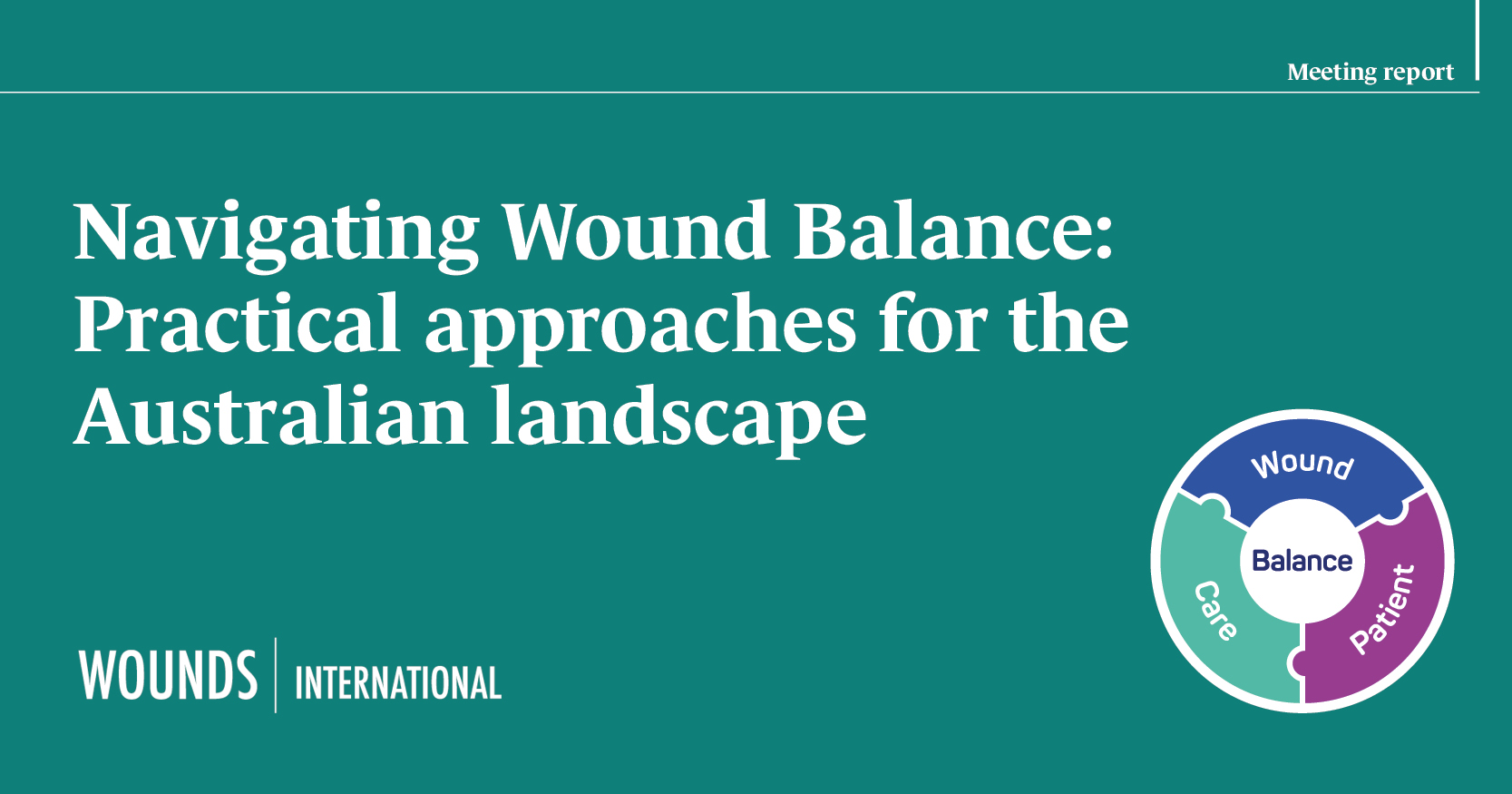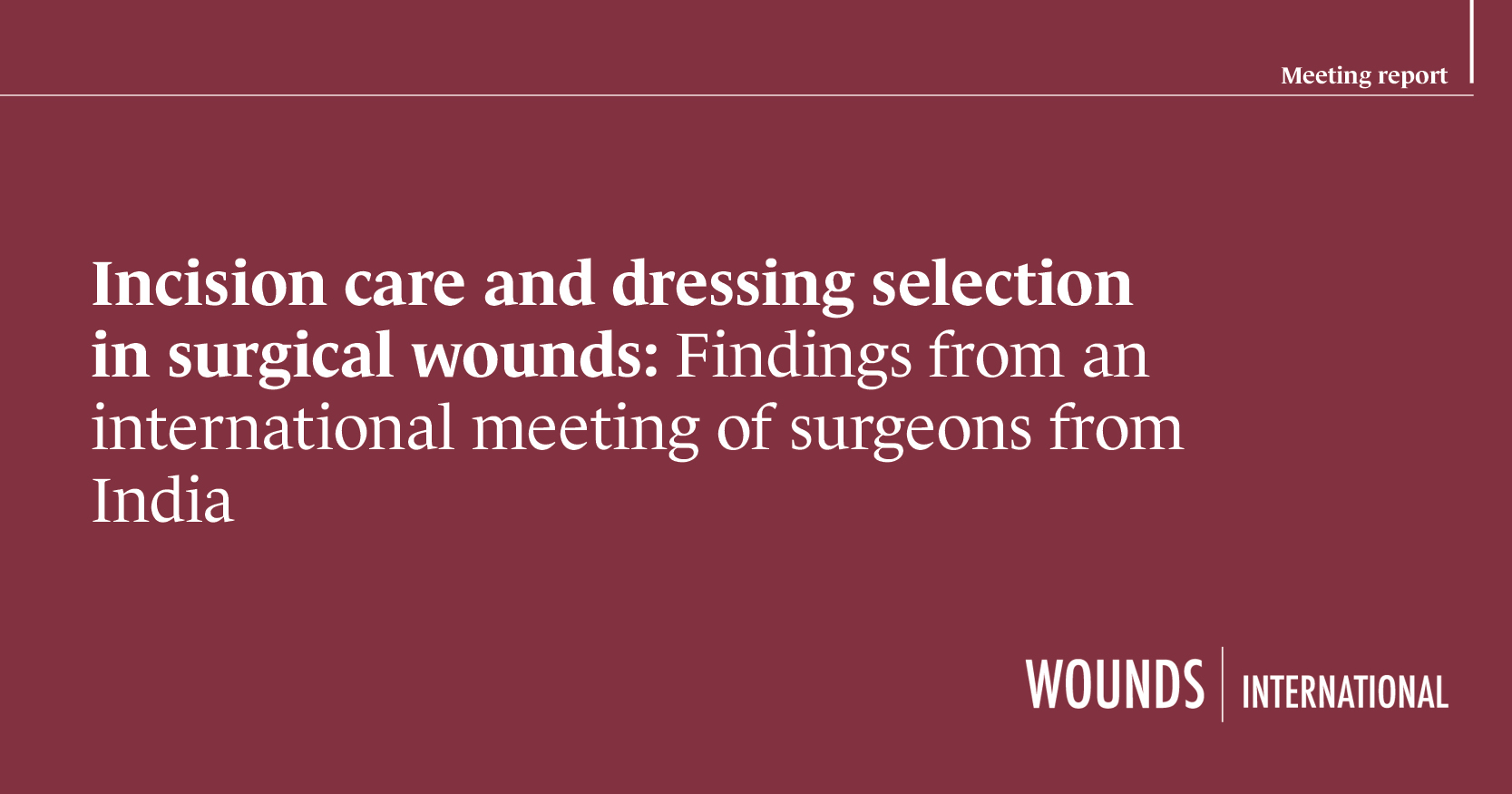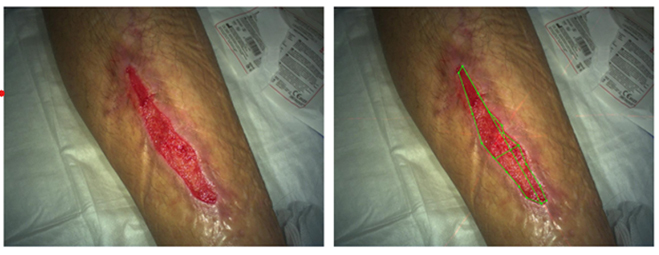The Applied Wound Management Chronic Wounds Global Advisory Council convened in November 2024 to discuss the pressing issues facing chronic wound care and propose actionable solutions (published in Wounds International, March 2025). The AWM Advisory panel highlighted several challenges:
- Lack of a robust evidence base due to inconsistent reporting of wound care data
- Delays to diagnosis and provision of appropriate care, compounded by variability in data reporting
- Lack of standardisation across wound care protocols, practices and practical tools, and
- Lack of high-quality education and training for wound care professionals
The pervasiveness of clinical inertia—resistance to adopting new practices even when evidence supports change—was identified as a major impediment in the face of these challenges (Harding and Queen, 2019). While evidence-based guidelines provide a rational path forward for the clinician, behavioural choice, driven by both internal motivations and external pressures, ultimately determines whether change actually happens.
With this in mind, this article shifts the focus to the mechanisms behind behavioural change in wound care, exploring how clinicians, patients and organisations can move from knowledge to action by understanding what motivates or hinders change.
Barriers to change: Going beyond knowledge in wound care practice
Despite advances in clinical knowledge, outdated wound care practices are widespread—for example, wet-to-dry dressings continue to be used, even though evidence supports more effective alternatives (Fleck, 2009). This disconnect between knowledge and implementation may be attributed to several barriers, identified by the Advisory panel:
- Comfort with familiar practices: Established routines provide a sense of reliability and safety, both for clinicians and patients. As a result, newer methods may be met with scepticism or hesitation, particularly if perceived as complex, even when evidence-based. Broader organisational or societal norms may also reinforce the use of outdated practices.
- Fragmented systems and inconsistent protocols: Variation in protocols, terminology and training across different settings leads to fragmentation of care. This makes it difficult to implement unified standards and best practices, particularly when patients transition between services or providers.
- Lack of standardised metrics: Inconsistent documentation and a lack of clear wound healing metrics make it hard to see whether treatments are working. Without reliable outcome data, identifying what constitutes progress — or poor care — also becomes challenging.
- Limited clinical confidence: Generalist clinicians and nurses may lack the confidence to apply advanced wound care protocols, make diagnoses or interpret wound status, preferring to defer to specialists. This creates bottlenecks and may delay timely interventions.
- Education gaps and access challenges: Training is often insufficient, overly theoretical or difficult to access. Combined with time pressures and competing clinical demands, this makes it challenging for clinicians to update knowledge or gain practical skills.
- Workforce turnover and knowledge loss: High staff turnover results in a continuous need for retraining and reorientation. Knowledge gaps caused by these transitions undermine consistency and contribute to a cycle of recurring behavioural inertia.
Recognising and addressing these barriers will be essential to fostering a system where optimal wound care becomes the standard. Yet, these barriers are not just operational — they are shaped by how people think, feel and behave in clinical settings. To address them meaningfully, it is important to understand the psychological forces that underpin them.
The psychology behind behavioural barriers: what drives clinical inertia?
Clinical decisions are rarely the result of rational thought alone. “Rationality” in medicine refers to making decisions that best support patient health by thoughtfully weighing the potential benefits and harms of different actions. However, medical decisions are often not fully rational — poor outcomes persist, driven by decision-making that violates key principles of rationality (Djulbegovic et al, 2017).
Instead, they are shaped by a continuous interplay of internal and external triggers. Internal triggers include cognitive factors like cognitive dissonance (Klein, 2019), fear of clinical error, a leading factor influencing patient safety (Boyer et al, 2024), thinking patterns, core beliefs and cognitive overload; and emotional states, such as burnout and stress resulting from moral injury (violations of the clinicians’ moral code outside of their control) (Mewborn et al, 2023), and feelings of being overwhelmed, frustrated, uncertain and lacking in confidence to name a few. In addition, the physical symptoms associated with these emotional states, plus exhaustion, pain or physical illness, can also have an impact.
These internal triggers do not directly determine clinical outcomes but instead can shape the context in which decisions are made, thus influencing clinicians’ day-to-day decision making and their ability to initiate, sustain or adapt wound care practices, and the same can be true for external triggers. Clinician’s personal circumstances — such as financial pressures and family dynamics — can create pressures that have an undesirable impact on continuity of care, availability of wound care services and workloads (Gray et al, 2019).
Workplace and organisational pressures including inadequate education and knowledge and limited resources also impact holistic care, with practice often based on experience, personal preference and colleague opinions, rather than on research evidence (Welsh, 2017). Other factors such as caseloads, expectations, time pressures and understaffing also add to the context in which clinicians are operating. Team dynamics, such as unresolved conflict, a low degree of support, or more destructive behaviours like bullying can also lead to negative consequences for patient care (Kim et al, 2017).
In wound care, this dynamic might explain why evidence-based practices are not always implemented, even when clinicians are aware of them. A single clinical moment — such as assessing wound progress — could play out in very different ways depending on how these triggers interact and the clinician’s thoughts, feelings and behaviours in response to such triggers.
Yet, despite the complexity and influence of internal and external triggers, clinicians retain the capacity to act intentionally; it is ultimately the clinician’s choice, how they choose to think and act in response to situations and these ongoing triggers, informed by internal readiness and supported by the right kinds of external conditions, that drives meaningful and sustained clinical action. Yet we must not underestimate how difficult it can be to exercise that choice when faced with interacting internal and external triggers, especially those that directly relate to the workplace and their role. Thus, to make these choices and to address clinical inertia, clinicians must have access to high-quality research, improved pathways for collaboration, increased training, and access to standardised wound assessment protocols to support their decision-making (Vains and Finlayson, 2021), alongside systems that support the clinician as a whole and build their confidence.
Fostering a lifelong love of learning might help to build such clinical confidence, strengthen adaptability and reduce fear often associated with change. When learning is valued and curiosity nurtured, clinicians are likely to be better equipped to implement new knowledge effectively and cope with change (Holloway, 2024).
Strategies to drive behavioural change
It is clear that sustainable change in chronic wound care requires more than disseminating best practices; it demands strategies that address both the psychological triggers and external pressures that shape clinician decision-making. The following strategies are recommended to create the conditions for change, aligning with how decisions are made in real-world settings and addressing both the psychological and structural factors that influence clinician and patient behaviour.
Reframe the objective
Replacing terminology that reinforces passive or maintenance-based care — such as “managing” wounds — towards words that emphasise “healing” will help realign the focus across teams. This shift supports a more proactive and healing-oriented approach to care delivery.
Suggested actions:
- Replace “chronic wound management” with “chronic wound healing” in clinical materials and communications
- Highlight healing-focused language in training and patient discussions
Empower informed decision-making
Clinicians and patients alike will benefit from recognising their agency in care choices. Behavioural change begins with education that builds confidence, encourages accountability and reinforces the value of evidence-based actions. When individuals understand the “why” behind clinical recommendations, they are more likely to take ownership and act accordingly.
Suggested actions:
- Use decision aids that clarify roles and responsibilities in care pathways
- Offer communication tools that help patients understand and contribute to treatment plans
Simplify to encourage adherence
Overly complex protocols and guidelines can create confusion and discourage action, particularly under pressure. Breaking processes down into clear, manageable steps makes behaviours easier to adopt and maintain, especially for less experienced staff. Consistent and concise messaging across platforms further reduces cognitive load and improves retention of key practices.
- Redesign protocols and guidelines into easy-reference flowcharts or checklists
- Develop quick-reference resources about complex interventions tailored to specific roles (e.g., junior nurses, home carers)
Incentivise positive behaviours
Reinforcing desirable behaviours like following protocols and adopting best practices — through recognition, feedback or reward — helps embed them in routine practice. Even small incentives can build momentum, especially when individuals and teams feel their efforts are seen and valued.
Suggested actions:
- Share local success stories or healing rate improvements to motivate teams
- Introduce peer recognition programmes that celebrate adherence to best practices
Standardise protocols and language
Disparities in terminology and practice lead to inconsistency and confusion. Implementing a shared framework for wound progression and codifying treatment pathways will promote alignment across care settings, enabling clearer communication, consistent decision-making and measurable outcomes.
Suggested actions
- Standardise ‘red flag’ definitions (e.g., lack of 30-40% wound reduction in three weeks) to trigger timely escalation
- Implement structured workflows for key stages of care (e.g., assessment, dressing selection)
- Monitor adherence to red flags and escalation protocols
- Use data dashboards to drive local accountability
Make education practical and accessible
Continuous learning must be integrated into everyday clinical routines, especially in settings affected by high staff turnover. Educational programmes should prioritise essential, actionable knowledge rather than exhaustive theory, focusing on real-world application and decision-making. Technology can enhance learning by delivering bite-sized training modules, decision-support tools or point-of-care apps that reinforce correct behaviour without overwhelming staff.
Suggested actions:
- Develop short, role-specific e-learning modules or microlearning tools
- Introduce onboarding pathways for new staff with embedded wound care standards
- Use tech-enabled learning to support on-the-job upskilling
Provide real-time support at the point of care
Not all clinicians have immediate access to wound care specialists. Virtual or AI-driven tools can offer real-time guidance, boosting confidence and enabling faster, more consistent care decisions. Embedding support into workflows could also reduce delays and improve confidence across care teams.
Suggested actions:
- Develop virtual consultations or “ask an expert” services for generalist clinicians
- Enable easy escalation or referral pathways directly from frontline apps or platforms
- Integrate AI-based triage or diagnostic tools into electronic health systems
Conclusion
The challenges facing chronic wound care cannot be addressed through knowledge alone. While protocols and best practices are essential, they will only translate into consistent action when effective behavioural change strategies are embedded into the systems, environments and cultures where care is delivered.
Understanding the internal and external triggers that influence decision-making — such as habits, beliefs, peer dynamics and system pressures — offers a powerful framework for driving change. Meaningful improvements come when structures are simplified, incentives are aligned, education is targeted and individuals are empowered to make informed, confident choices.
Indeed, when behavioural change strategies are effectively applied, the potential impact could be transformative:
- More consistent wound care delivery across teams and settings
- Fewer unnecessary or outdated interventions, reducing treatment burden
- Greater clinician confidence and engagement, particularly among generalists
- Improved patient experiences and healing outcomes
- The emergence of a culture of continuous improvement, where adapting and evolving become embedded in the system.
These outcomes represent more than operational wins — they reflect a shift in mindset, where healing becomes the shared priority and each action is supported by both evidence and behaviourally informed design.
Overcoming clinical inertia in wound care requires thinking beyond “what should be done” to also focus on how change happens. It calls for integrating behavioural insights into every layer of the system — ultimately, making behavioural thinking central to innovation and implementation efforts in the wound care space.







